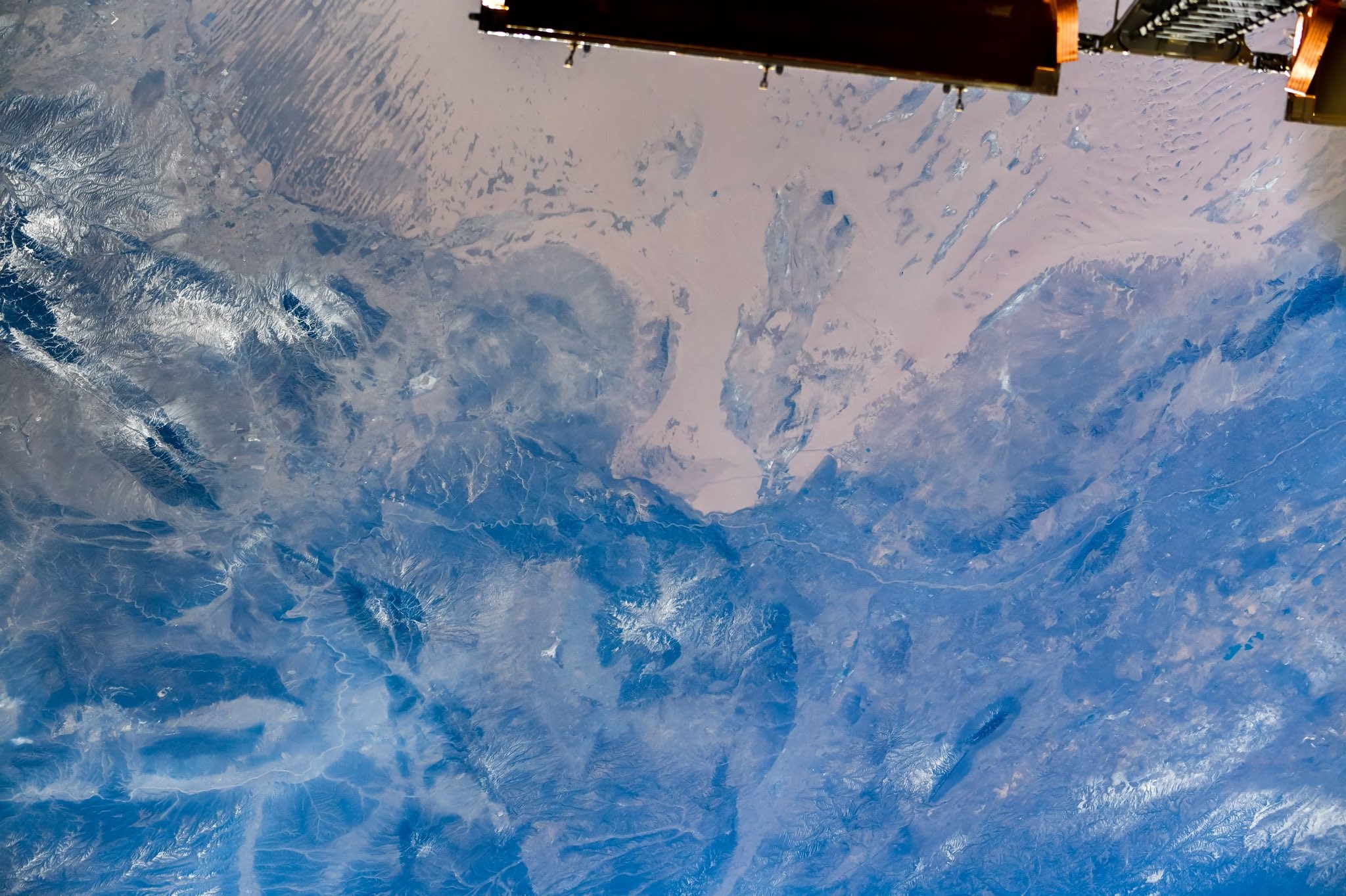Astronaut Wang Yaping captured from Tiangong Space Station Gobi Desert, China.

The Gobi Desert is a large desert or brushland region in East Asia, and is the sixth largest desert in the world. The Gobi measures 1,600km from southwest to northeast and 800km from north to south. The Gobi is overall a cold desert, with frost and occasionally snow occurring on its dunes. Besides being quite far north, it is also located on a plateau roughly 910–1,520m above sea level, which contributes to its low temperatures. An average of about 194mm of rain falls annually in the Gobi. Additional moisture reaches parts of the Gobi in winter as snow is blown by the wind from the Siberian Steppes. These winds may cause the Gobi to reach −40°C in winter to 45°C in summer. However, the climate of the Gobi is one of great extremes, combined with rapid changes of temperature of as much as 35°C. These can occur not only seasonally but within 24 hours.
The local scenery on the ground is as follows.

Reference: Wang Yaping’s Tweet
See earthview photo gallery: LiVEARTH